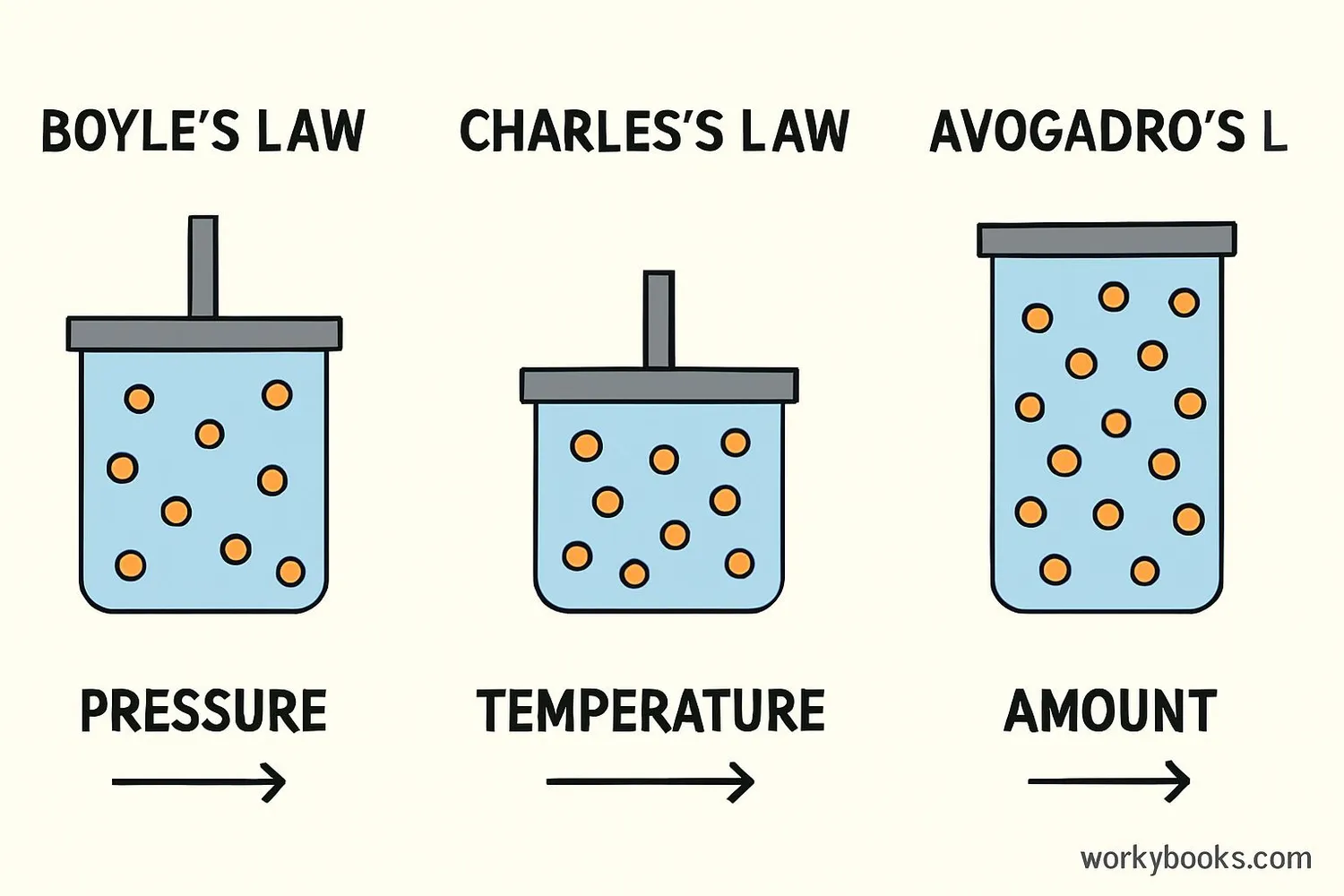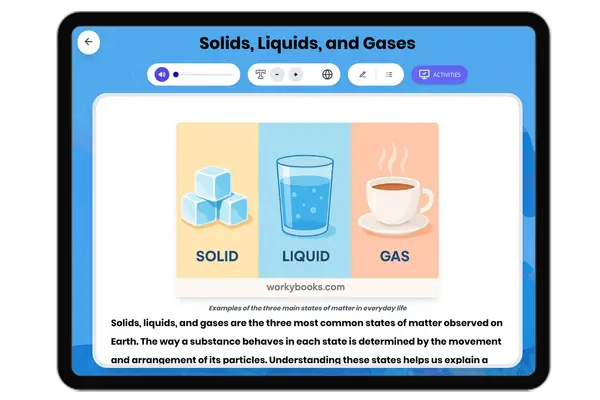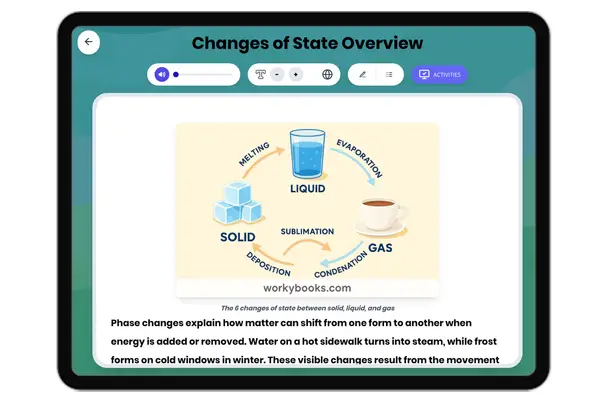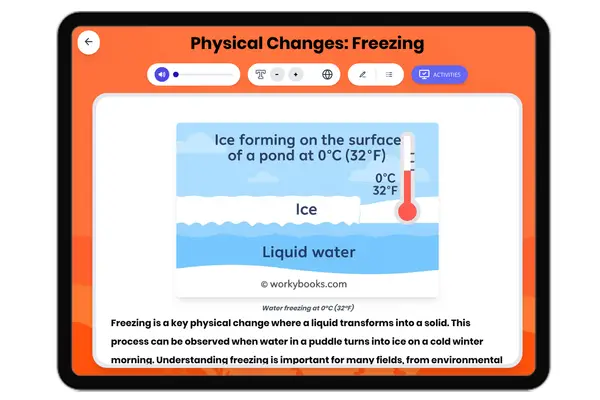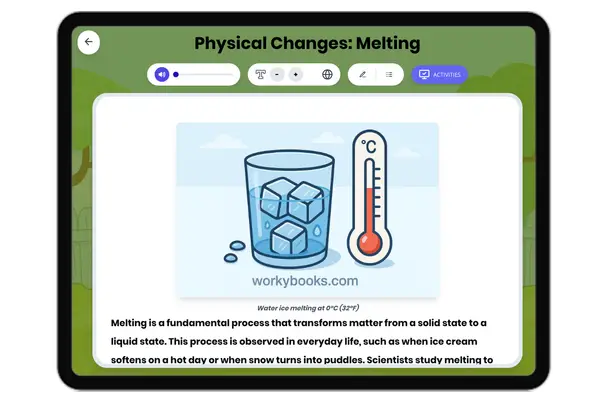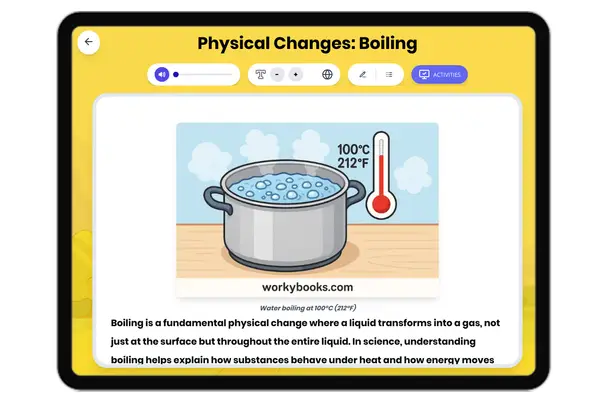Behavior of Gases — Reading Comprehension
Premium Resource
Grades
- 5
- 6
- 7
- 8
Standards
- MS-PS1-4
PRINT+DIGITAL RESOURCE
This learning resource is available in interactive and printable formats. The interactive worksheet can be played online and assigned to students. The Printable PDF version can be downloaded and printed for completion by hand.
About This Reader
This comprehensive reading passage explores the behavior of gases for middle school students, aligned with NGSS standard MS-PS1-4. Students will learn about key properties such as compressibility, the ability of gases to expand and fill any container, and how gases exert pressure. The passage explains the relationships among temperature, volume, and pressure through conceptual explanations and real-life examples like balloons expanding in heat, tire pressure changes, and how syringes work. Academic vocabulary is embedded and clarified within the text, and students are provided with a glossary for reference. The lesson includes a simplified version of the passage for differentiated instruction, a Spanish translation, multiple-choice and writing activities, and graphic organizers to support comprehension. Audio integration is available for accessibility. This resource is ideal for deepening students’ understanding of gas behavior and supporting science literacy in grades 6-8.
Perfect For:
👩🏫 Teachers
- • Reading comprehension practice
- • Auto-graded assessments
- • Literacy skill development
👨👩👧👦 Parents
- • Reading practice at home
- • Comprehension improvement
- • Educational reading time
🏠 Homeschoolers
- • Reading curriculum support
- • Independent reading practice
- • Progress monitoring
Reading Features:
📖
Reading Passage
Engaging fiction or nonfiction text
❓
Comprehension Quiz
Auto-graded questions
📊
Instant Feedback
Immediate results and scoring
📄
Printable Version
Download for offline reading
🔊
Read Aloud
Voice-over with word highlighting


